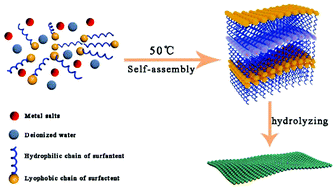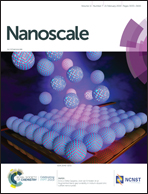A generalized strategy for the synthesis of two-dimensional metal oxide nanosheets based on a thermoregulated phase transition†
Abstract
Two-dimensional (2D) metal oxide (MO) nanomaterials, like graphene, possess unique electrical, mechanical, optical and catalytic performances, and have attracted substantial research interest recently. However, it remains a challenge to easily obtain 2D MO nanosheets by a generalized synthetic pathway. Here, we report a general and facile strategy for the synthesis of 2D MO nanosheets induced by nonionic surfactant micelles. Notably, the novel strategy primarily relies on the thermoregulated phase transition of the micelles. The resulting 2D MO nanosheets show high specific surface areas. As a demonstration, Sb2O3 nanosheets synthesized by our method as anodes for sodium-ion batteries (SIBs) have a high reversible capacity of 420 mA h g−1 and a high capacity retention of 99% after 150 cycles at 0.1 A g−1. Mn3O4 nanosheets for supercapacitors have a remarkable specific capacitance of 127 F g−1 at a current density of 0.5 A g−1. Even at a large current density of 5 A g−1 after 10 000 cycles, 96% of the specific capacitance is retained, demonstrating the remarkable performance of these nanosheets for energy storage applications.



 Please wait while we load your content...
Please wait while we load your content...